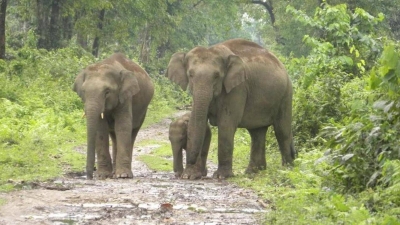
National parks are said to be found in more than 100 countries around the world. They play an important role in any ecosystem, and are set up by a country’s government to conserve the biodiversity and the natural environment of a region. The creation and the measures initiated for the upkeep of national parks could be indicative of a country’s commitment towards the protection of its natural environment and its inhabitants. Australia has the highest number of national parks in the world – over 650! India has the distinction of being one of the very few countries in the world to have more than a hundred national parks. And, just recently it added two more to that list. Let’s find out more about this.
Madhya Pradesh has the highest number of national parks among States – 10 (excluding the Ghughwa National Fossils Park). Among Union Territories, Andaman and Nicobar Islands tops the list with nine. The second place among States has been taken over by Assam now, with seven. As many as five of these were created in the 20th Century – Dibru-Saikhowa, Kaziranga, Manas, Nameri, and Rajiv Gandhi Orang. The other two – Raimona and Dihing Patkai National Parks – were formally notified this June.
Raimona was earlier a Reserve Forest (among the oldest in Assam), and is now expanded to 422 sq km. “bound by Phipsoo Wildlife Sanctuary of Bhutan, the Buxa Tiger Reserve of West Bengal and the state’s own Manas National Park”. The region is said to host several endangered species, including the tiger, and many species of birds and butterflies. Dehing Patkai was earlier a wildlife sanctuary. It is expanded to over 230 sq km, and is noted for being home to a wide variety of mammals.
While it is understandable that as the second largest State Madhya Pradesh has the highest number of national parks, Assam, one of the relatively small States, having seven of them is a pointer to its healthy natural environment.
Picture Credit : Google




